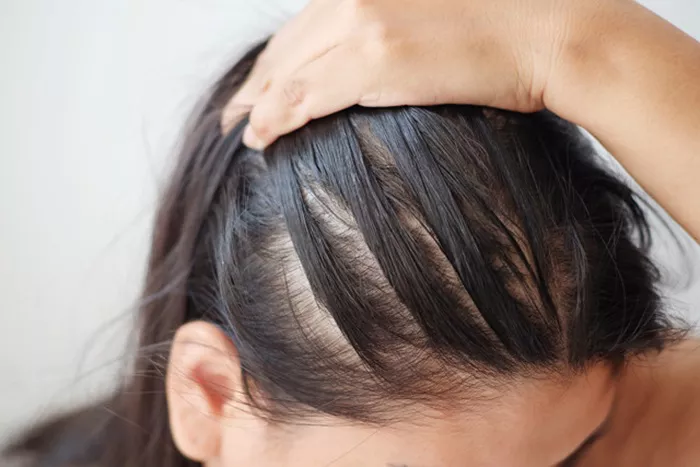Caring for thin hair can be challenging, but with the right techniques and products, you can enhance its appearance and health. This article will provide detailed guidance on how to care for thin hair effectively.
Understanding Thin Hair
Thin hair vs. Fine hair
Thin hair refers to the density of hair strands on your scalp. Fine hair refers to the thickness of each individual hair strand. It’s important to distinguish between the two to choose the right care methods.
Causes of Thin Hair
Thin hair can be genetic. It can be caused by factors like aging, hormonal changes, or medical conditions. Understanding the cause helps in addressing the issue appropriately.
Choosing the Right Shampoo and Conditioner
Sulfate-Free Shampoos
Sulfates can strip natural oils. Use sulfate-free shampoos to maintain moisture and avoid irritation.
Volumizing Conditioners
Choose lightweight, volumizing conditioners. They provide moisture without weighing down your hair.
Frequency of Washing
Wash your hair every other day. Over-washing can strip oils, while under-washing can cause buildup.
Proper Washing Techniques
Gentle Handling
Be gentle while washing. Use your fingertips to massage your scalp. Avoid aggressive scrubbing.
Rinsing Thoroughly
Rinse your hair thoroughly to remove all product residues. Residues can weigh down thin hair.
Cold Water Rinse
Finish with a cold water rinse. It helps to close the hair cuticle, adding shine and reducing frizz.
Drying and Styling Tips
Avoid Heat Styling
Minimize the use of heat styling tools. Heat can cause damage and breakage. Air dry your hair whenever possible.
Use Heat Protectant
When using heat styling tools, always apply a heat protectant spray. It minimizes damage.
Blow-Drying Techniques
Use a blow dryer with a nozzle attachment. Direct the airflow from roots to ends. Use a round brush for volume.
Choosing the Right Hair Products
Lightweight Serums and Oils
Use lightweight serums and oils. Heavy products can weigh down thin hair.
Avoid Heavy Styling Products
Avoid heavy gels, creams, and waxes. They can make thin hair look greasy and flat.
Volumizing Mousses and Sprays
Opt for volumizing mousses and sprays. They provide lift and fullness without weighing hair down.
SEE ALSO: How to Get Smooth Shiny Hair?
Regular Trims and Haircuts
Frequent Trims
Get regular trims every 6-8 weeks. It helps to remove split ends and keeps your hair looking healthy.
Layered Haircuts
Consider layered haircuts. They add movement and volume, making thin hair appear fuller.
Scalp Care
Scalp Massages
Perform regular scalp massages. It stimulates blood flow and promotes hair growth.
Avoid Tight Hairstyles
Avoid tight ponytails or braids. They can cause breakage and hair loss.
Exfoliate Your Scalp
Use a scalp exfoliator once a week. It removes dead skin cells and promotes a healthy scalp environment.
Diet and Nutrition
Balanced Diet
Eat a balanced diet rich in vitamins and minerals. Include proteins, iron, and omega-3 fatty acids.
Stay Hydrated
Drink plenty of water. Hydration is essential for healthy hair.
Supplements
Consider taking supplements like biotin and vitamin D. Consult with a healthcare provider before starting any supplements.
Protecting Your Hair
Sun Protection
Wear a hat or use hair products with SPF. UV rays can damage hair.
Avoid Chlorine and Saltwater
Rinse your hair before and after swimming in chlorinated or saltwater pools. Use a swim cap if possible.
Silk Pillowcases
Sleep on silk pillowcases. They reduce friction and prevent hair breakage.
Addressing Hair Loss
Medical Consultation
If you notice significant hair loss, consult a healthcare professional. They can diagnose and treat underlying conditions.
Hair Loss Treatments
Consider treatments like minoxidil or finasteride. These can promote hair growth.
Avoid Stress
Manage stress through relaxation techniques. Stress can contribute to hair loss.
Styling Tips for Thin Hair
Root Lifting Techniques
Use root-lifting sprays or powders. Apply them to the roots and massage gently for added volume.
Teasing and Backcombing
Tease or backcomb the roots for extra lift. Be gentle to avoid damaging the hair.
Texturizing Sprays
Use texturizing sprays for added volume and movement. They give the appearance of thicker hair.
Avoiding Common Mistakes
Over-Conditioning
Avoid over-conditioning your hair. Use conditioner sparingly and focus on the ends.
Using Too Many Products
Limit the number of styling products you use. Too many products can weigh down your hair.
Skipping Heat Protectant
Never skip heat protectant when using styling tools. It’s crucial for preventing heat damage.
Natural Remedies for Thin Hair
Aloe Vera
Apply aloe vera gel to your scalp. It promotes hair growth and soothes the scalp.
Coconut Oil
Use coconut oil as a deep conditioning treatment. It strengthens and nourishes hair.
Egg Masks
Apply egg masks to your hair. They are rich in proteins and vitamins that strengthen hair.
Consulting a Professional
Regular Check-Ins
Visit a hairstylist regularly. They can provide personalized advice and treatments for your hair type.
Professional Treatments
Consider professional treatments like keratin or protein treatments. They can improve the health and appearance of your hair.
Custom Hair Care Plan
Work with a professional to create a custom hair care plan. It ensures you’re using the right products and techniques.
Embracing Your Hair
Accept Your Hair Type
Embrace your hair type. Thin hair can be beautiful and stylish with the right care.
Experiment with Styles
Don’t be afraid to experiment with different hairstyles. Find what works best for your hair type.
Boost Your Confidence
Take pride in your hair. Confidence is the best accessory you can wear.
Conclusion
Caring for thin hair requires understanding its unique needs. By choosing the right products, adopting gentle handling techniques, and maintaining a healthy lifestyle, you can enhance the health and appearance of your thin hair. Embrace your hair type and experiment with styles that make you feel confident and beautiful. With consistent care and attention, your thin hair can look its best every day.

